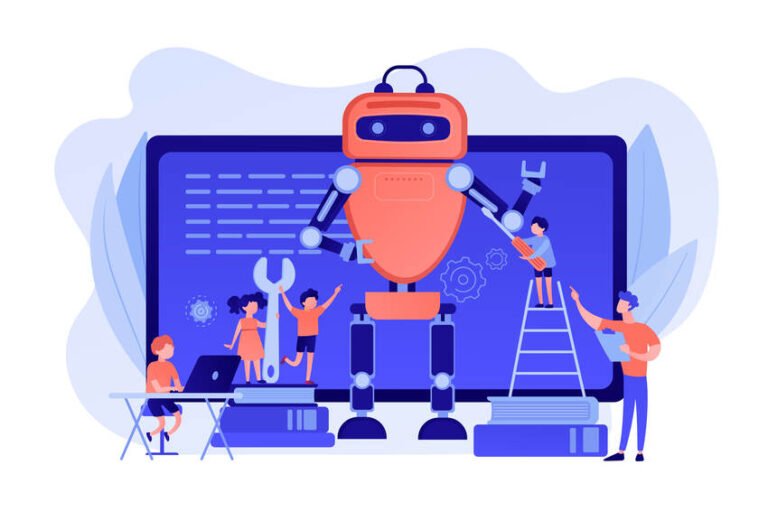Robotic process automation software is to take over form replacing all sorts of repetitive, mundane human effort in digital systems. These technology applications simulate human action to help enterprises be more effective, fast, and economical in their work.
Introduction
The automated processes done by software bots perform commonsensical functions by executing operational tasks under instructions using organized data. It mimics the human actions needed for completing this chore for click buttons, drag file operations and copy-paste. These do not need to be taught repetitively-the bots learn automatically and often with more swiftness and accuracy than humans. RPA then indeed becomes taking care of burnout among employees and all other potentially hazardous outlooks that often accompany such boring work.
Robotic process automation will only work when a company defines a taking-in aspect into account. Thus, here are some steps which organizations could take in order for a smooth transition towards RPA.
Defining The Main RPA Issue That Needs To Be Solved
The first step is to identify the general areas of improvement that ought to be resolved. The nature of the problem should therefore be considered in order to clearly state the reasons why RPA is important to the business leadership and define what the ideal RPA solution will be for the situation.
Assess The Processes to See Ideal Automations
Upon elucidating the overarching subject, proceed to perform analytical analyses on different workflows to find out any inefficient or outdated processes. This helps highlight for the organization what specific tasks RPA needs to take into effect.
Analyze Organizational Capacity for RPA
Evaluate whether the organization has the required personnel and resources for Robotic Process Automation implementation. While some businesses + take RPA vendors on board the entire RPA process, check departmental budgets to see whether the company has enough funds to acquire RPA tools, software, and solutions.
Bring into line Leadership on RPA Objectives
Ensure that the company leadership is updated regarding any plans for introducing Robot Process Automation into their systems. Explain the problems RPA can solve for the business, what processes it will be integrated into, and a rough outline of the plan to test and track the impacts of RPA.
Create A Plan For Applying RPA
Consider defining the scope in terms of detailed testing and adoption of robotic process automation. Assign the necessary staff for the process, including IT and HR leaders. Also, prepare a plan on how the RPA implementation is to be communicated to each department concerning the effects on their processes.
Test RPA Techniques
Introduce robotic process automation on a smaller scale before introducing it to the whole solution. Test how RPA influences an individual process and gather feedback from affected employees if that is worthwhile going further with increased automating workflows.
Position RPA Solutions
Once an RPA strategy has been tested and got positive feedback, it’s time to implement RPA fully. Get in touch with every department affected and ensure those managing the roll-out have a way to coordinate and troubleshoot.
Measure The Impact of RPA
Keep a regular rhythm for the evaluation completely on the impacts that RPA brings into company processes and give concrete metrics for tracking the effects. Continuous evaluation of RPA helps teams determine whether the intended goals have been achieved and alter the strategy if needed.
Conclusion
Among others, fears of RPA operations are for their possibility of causing mass job loss. Indeed since the year 2000, some 1.7 million manufacturing jobs have been wiped out because of automation. Most of white-collar jobs are doomed to extinction now that workbots can do the job with them.
Many of the leading industry experts, however, are quick to state the contrary; the future will not be one of full unemployment through automation. In general, RPA is designed for repetitive task processing purposes: tasks following repeated rules-that are unimportant for an employee-because employees should be able to focus on other more strategic or complicated works beyond the bot’s capability. Moreover, this will create more millions of new positions due to automated technology.
The future of RPA is likely, then, to be one where bots and humans work together in concert to enhance the efficiency of operations across the board. Employees should be prepared and adapt as best as they can.
Frequently Asked Questions (FAQs)
What is meant by robotic process automation?
It is the incorporation of expert bots and software to automate rule-based and repetitive work like filling our forms and transferring files.
What are the two main types of RPA?
Mainly 2 kinds of RPA are present: Attended and Unattended. Unlike unattended RPA, which acts without human intervention but will initiate tasks in the background by some events like a defined time or detection of a new file, attended RPA is human-oriented, where bots have to be triggered manually to finish their assigned task.
What is the main difference between AI and RPA?
Robotic Process Automation lets routine work and programmatic work be done by emulating actions of a person through bot use, Whereas Artificial Intelligence is a simulation of human intelligence that allows a computer machine to solve problems, make predictions, and carry out other cognitive tasks. RPA will not be having unstructured data, specific logic for all unit tasks, to work on simple tasks, whereas they use unstructured data because they use their own mechanism to perform complex decision-making and analysis. However, AI can also bring additional enhancements to RPA systems as part of intelligent automation.
Diginatives offers top-notch RPA for organizations across the globe. If you want similar services, please contact us.
